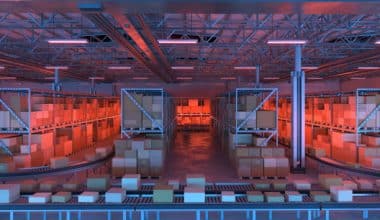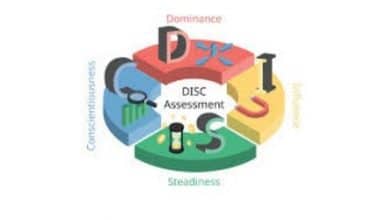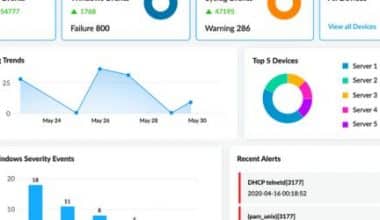Your company can develop the best product possible and remain in compliance with the appropriate regulations with the help of both quality control and quality assurance. Hence, having a solid understanding of these concepts is important, especially if you deal with quality management systems. We will be comparing quality assurance vs quality control, as well as their management goals and examples in this article.
What is Quality Assurance vs Quality Control?
The terms “quality assurance” and “quality control” are usually interchangeable. However, despite their similarities, the two concepts differ significantly. Each one is a component of quality management.
By incorporating quality controls into the product life cycle, quality assurance (QA) refers to the steps taken to plan, develop, and deliver a product that is safe, efficient, and meets client expectations. It also entails all of the deliberate and methodical actions taken as part of the quality system to ensure that the product or service will be of the highest caliber.
Quality control is about inspection, but quality assurance is about the production and operations of a product. It entails the operational methods and actions taken to confirm that a good or service complies with quality standards. Quality checks may take place before manufacturing when other suppliers’ raw materials or parts are verified at various production stages and once the finished product is produced.
The combination of both quality assurance and quality control helps to avoid defects when they happen. Both are essential. Quality control alone won’t be enough to lower errors. Knowing the differences between the two will make it clear why both should be useful.
Feature Differences Between Quality Control and Quality Assurance
#1. Quality Control Is Reactive, Whereas Quality Assurance Is Proactive
Through careful process design, quality assurance seeks to stop faults in their tracks. As a result, it is a proactive strategy. On the other side, quality control aims to spot flaws after they have occurred and act receptively.
The design of processes, including standard operating procedures, workspace organization, training, and visual management, is such that errors will be uncommon or nonexistent with adequate quality assurance. Thus, every time they repeat the process, the ideal outcome is a safe, efficient product that satisfies client needs. Therefore, quality control happens after a process has come to an end, and, in the best scenario, it stops faulty goods from reaching customers.
#2. Quality Control Is About Products, Whereas Quality Assurance Is About Processes.
Processes are the focus of quality assurance, which incorporates quality at every stage. Product-focused and aimed at finding product flaws is quality control. Consider the distinction as being between results and actions (QA) (QC). Therefore, to understand the contrast between quality control vs assurance, here are some examples of the tasks you need for each.
Tools and Processes for Quality Assurance
- Typical work
- Documentation
- Alternate control
- Organizing the workspace
- Employee education
- Audits
- Gemba strolls
Tools and Processes for Quality Control
- Batch examination
- Testing for validity
- Sample products
- Testing in a lab
- When doing a production inspection
- The measure of errors per opportunity
#3. Quality Control Is Discrete While Quality Assurance Is Systemic
Both quality assurance and quality control are strategies for preserving high standards, although they address different issues. The question of “Is the system providing defect-free goods or services that satisfy customer needs?” is one of quality assurance. While the question “Does the product that the system generated fulfill quality standards?” is asked by quality control.
The inputs used to make the product, such as the raw materials or components supplied by a supplier, may occasionally also be subject to quality control measures. This technique includes actions like batch sampling raw materials and auditing vendors.
#4. Quality Control Is a Transient Activity, Whereas Quality Assurance Is an Ongoing Procedure.
In some respects, quality control is more like a picture than quality assurance is like a movie. While QA actions are ongoing throughout the duration of the process, which can take days or even weeks, the final product is only available for QC examination once they complete it. With the introduction of process improvements, components of quality assurance also change over time. On the other hand, quality control is typically very consistent over time.
#5. The Entire Team Participates in Quality Assurance, While Dedicated Personnel Is Involved in Quality Control.
Even if their only responsibility is to perform routine tasks, every team member contributes to quality assurance. For instance, an employee engages in QA each time they identify and submit a chance for improvement. Similar to how those who establish benchmarks, write down processes, practice 5S, and carry out corrective actions all contribute to quality assurance.
Many of the time, designated individuals within the business are in charge of product testing as well as quality control through inspection. These staff members record flaws, report them, and, when necessary, start a reaction.
Quality Assurance vs Quality Control Examples
Let us, then, look at some examples of comparison between quality assurance vs control.
Quality Assurance
Tools for quality assurance are useful proactively and they are in creation to stop the production of non-conforming goods. Through the development, refinement, and application of well-defined processes that guarantee the quality of a product when adhered to exactly, they are intended to eliminate process variance. This also means that the QA department must be separate from operations and manufacturing.
QA groups are in charge of conducting ongoing audits of the quality system’s implementation to stop the production of goods that don’t adhere to specified quality standards. To do this, they frequently use quality control tools. According to the U.S. Food and Drug Administration’s (FDA) Quality Systems Approach to Pharmaceutical CGMP Regulations guidance, QA activities in life sciences manufacturing are those that principally entail the following:
- Approval and review of all production and maintenance-related procedures
- Review of related documents
- Doing trend analysis and/or appraising them.
Quality Control
A quality control system helps QA. Inspection and testing procedures are useful as part of quality control activities to find and store nonconforming items. The quality control function is also a part of operations and production and bases product inspection and testing on the standards established by QA. In this case, quality control specialists resemble the police who uphold and properly implement the laws passed by legislators.
The types of reactive duties that frequently fall under the ambit of the quality control system in the life sciences manufacturing industry include examples like:
- Monitoring and measurement equipment control and calibration.
- Environmental surveillance.
- Checking the final product.
- There is product testing and inspection while it is in the process.
- Checking the labels.
- Material examination
- Handling and storing of materials.
- Inspection and separation of nonconforming materials.
- Permission for returned products.
What is Quality Assurance vs Quality Control Differences?
Having seen the examples of the comparison between quality control vs assurance, here are some differences between them.
What is Quality Assurance?
The goal of quality assurance, or QA, is to eliminate defects. Quality Assurance also makes sure that the application of strategies, tactics, procedures, and methodologies developed for the projects is in the correct place.
The processes used to manage and produce the deliverables are monitored and tested to ensure that they have been followed and are functioning through quality assurance activities.
What is Quality Control?
The goal of quality control, or QC, is to find defects. QC makes sure that the project’s designed approaches, techniques, methodologies, and processes are carried out correctly. The project deliverables are also monitored and verified by QC activities to ensure they adhere to the established quality requirements.
Also, quality control is a proactive approach that focuses on detection. It is mindful of the flaws. After quality assurance, there must be a completion of quality control.
What Is the Difference Between QA and QC?
Contrary to popular belief, QA and QC are not the same things, and you cannot interchange them. However, both are very related, making it sometimes exceedingly challenging to distinguish the differences. The truth is that while they interconnect, their concepts are different. Although both QA and QC are elements of quality management, QA is more concerned with defect prevention than QC is with problem identification.
The process of quality assurance is proactive and preventive in nature. It also detects problems with the procedure. Thus, it is necessary to finish QA before quality control. Below is the list of their differences.
Differences Between Quality Assurance vs Quality Control
Quality Assurance Quality Control
| It is a procedure that carefully considers how to guarantee that quality requests will be fulfilled. | QC is a procedure that carefully considers how to satisfy the quality request. |
| Preventing the defect is a QA goal. | Finding and fixing errors is a goal of quality control. |
| The process of managing quality is known as QA. | QC is a technique for ensuring quality. |
| The software is not really run during QA. | Executing the program is a necessary part of QC. |
| QA is the responsibility of the entire team. | QC is handled by the testing team. |
| An Example of QA Verification. | Validation is a QC example. |
| QA stands for “planning to perform a process.” | For carrying out the intended process, QC means action. |
| Statistical Process Control is a statistical technique applied to quality assurance (SPC). | Statistical Quality Control is the name given to the statistical technique employed in QC (SPC). |
| QA ensures that you are acting appropriately. | QC ensures that the outcomes of your work are what you anticipated. |
| QA defines the standards and procedures to be used in order to satisfy the needs of the client. | When working on the product, QC makes sure that the standards are followed. |
| The method used to produce the deliverables is known as QA. | Quality control is the procedure to ensure that outputs are |
| The entire software development life cycle is under the purview of QA. | The life cycle of software testing is handled by QC. |
Does Quality Control No Longer Need Quality Assurance?
You might occasionally have this thought, once in a while though.
Why do we need to execute a round of QC if we have correctly and totally followed all pre-defined processes, policies, and standards?
QC, in my opinion, is necessary after QA. When performing “QA,” we establish standards, create checklists, and define methods, rules, and strategies that must be useful and followed over the course of a project.
To ensure that the project is kept at a high quality and the end result at least satisfies the client’s expectations, we adhere to all the set processes, standards, and rules that we designed in QA when performing QC.
Quality Assurance vs Quality Control vs Quality Management
The fundamental components of consistent manufacturing are quality assurance (QA), quality control, and the overall quality management system. They also serve as the foundational tools used by manufacturers to uphold regulatory compliance and make ongoing improvements. The definitions that follow thus remove any ambiguity from the duties, differences, and effects of each quality function.
Implementing standardized processes that yield reproducible production outcomes with required levels of quality, hence, requires the use of quality assurance technologies. A quality management system is a more comprehensive strategy a company uses to reduce errors and flaws, comply with legal requirements, and satisfy a particular set of inborn qualities while producing goods.
There isn’t necessarily an adversarial relationship between quality assurance and quality control, despite the fact that the terminology might lead some people to feel otherwise. Instead, they work in tandem to support a manufacturer’s overall quality approach. Both functions in life sciences organizations depend on a rigorous quality management system (QMS).
What Differs Between Quality Control vs Quality Management Systems, vs Quality Assurance Tools?
#1. Tools for Ensuring Quality
Companies can manage quality processes with the aid of quality assurance solutions. Deviations, corrective and preventative actions (CAPAs), and other processes are all streamlined by digital tools. Additional transparency into a company’s quality assurance is also provided through digital tools created on the same platform. This is the best way to maintain compliance and handle problems early.
#2. A System of Quality Control
A quality management system is a more comprehensive strategy that can be vital for a company to reduce errors and flaws, comply with legal requirements, and satisfy a particular set of inborn qualities while producing goods.
#3. Quality Assurance
The definition of quality control can be “when a component of quality management is trying to meet the quality criteria.” Quality control is more of the inspection side of quality management, whereas quality assurance refers to how you carry out a process or manufacture a product. “The operational approaches and actions utilized to fulfill standards for quality” is a different definition.
A Quality Management System vs Quality Assurance vs Quality Control
Both quality assurance and quality control are important in developing products that fulfill consumer standards for safety and efficacy. It is therefore impossible to determine which is more crucial. A solely inspection-focused approach results in waste and potential flaws that reach the client. Quality control is also important to confirm that items produced by process-oriented thinking fulfill the criteria for quality.
When integrated within a quality management platform created to support end-to-end quality procedures, quality control and assurance are the simplest to handle. You can also break down some activities like document control, opportunity management, data visualization, training, and CAPA management into a single online solution.
Through the effective application of quality assurance and control, organizations can be certain that clients will obtain goods and services that are free of flaws and that they will satisfy their needs.
Why Is Quality Assurance Better than Quality Control
The truth is that while they are linked, their beginnings are distinct. Although both QA and QC are elements of quality management, QA is more concerned with defect prevention than QC is with problem identification.
Quality Assurance vs Quality Control Difference
The goal of quality assurance, or QA, is to eliminate defects. Quality Assurance makes sure that the strategies, tactics, procedures, and methodologies developed for the projects are applied correctly. While. the goal of quality control, or QC, is to find defects. QC makes ensuring that the project’s designed approaches, techniques, methodologies, and processes are carried out correctly.
What Are the 4 Types of Quality Assurance?
Process control, control charts, acceptance sampling, and product quality control are the four methods of quality assurance.
Quality Assurance vs Quality Control Examples
Some examples of quality assurance and control are as follows:
Quality Assurance
- All production and maintenance-related procedures are reviewed and approved.
- Review of related documents.
- Doing trend analysis and/or appraising them.
Quality Control
- Monitoring and measurement equipment control and calibration.
- Environmental surveillance.
- Checking the final product.
- Product testing and inspection while it is being made.
- Checking the labels. ET
How Many Levels of Qc Are There?
There are three standard categories (I, II, and III) within the usual severity. More than 90% of all inspections employ Level II. For every 8,000 units ordered, for instance, just 200 will pass inspection.
What Are the Two Principles of Quality Assurance?
Two criteria comprise quality assurance: “fit for purpose” (the product must be acceptable for its intended use) and “right first time” (mistakes should be eliminated).
- TOP ACCOUNTING FIRMS: 35+ Best in the World (Updated!!!)
- Strategy Consulting: Top Consulting Firms in 2023
- What Is INCOME BOND: Definition and Benefits
- Certified Funds: Overview, How they Work, Examples, Real Estate Benefits
- Project Quality Management Planning Guide (Tools & Software)
- WHAT IS MANAGERIAL ACCOUNTING: Methods of Managerial Accounting






